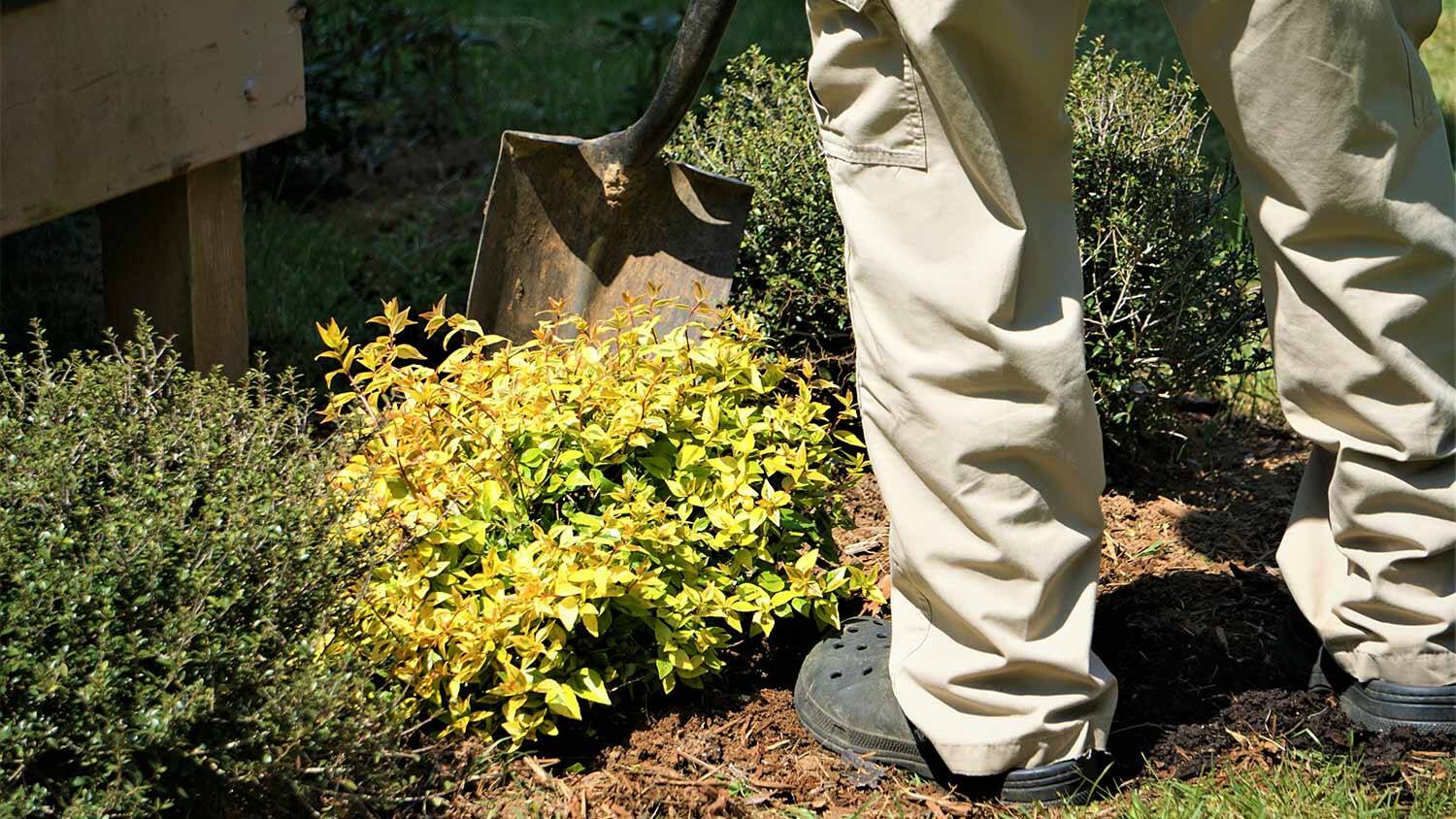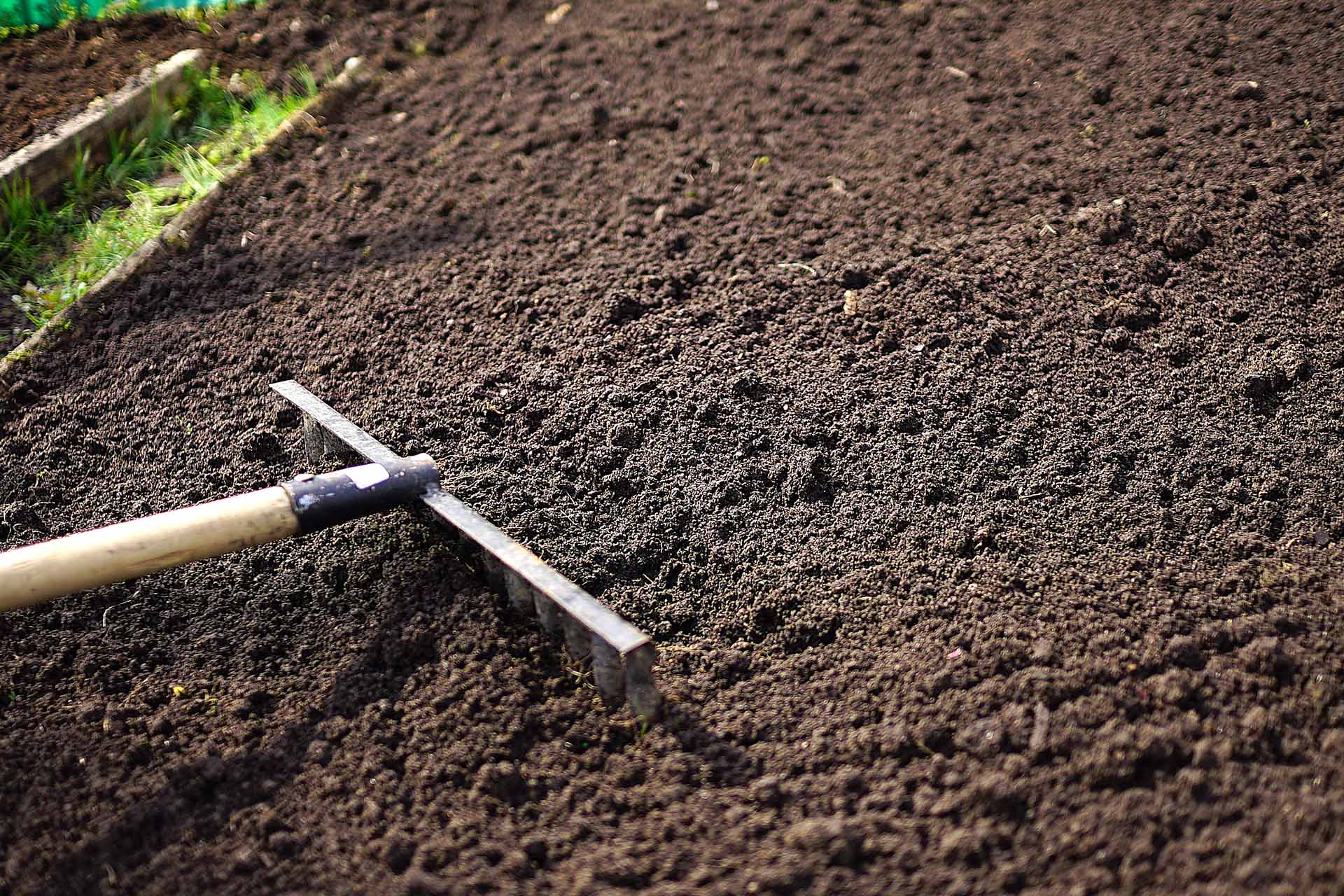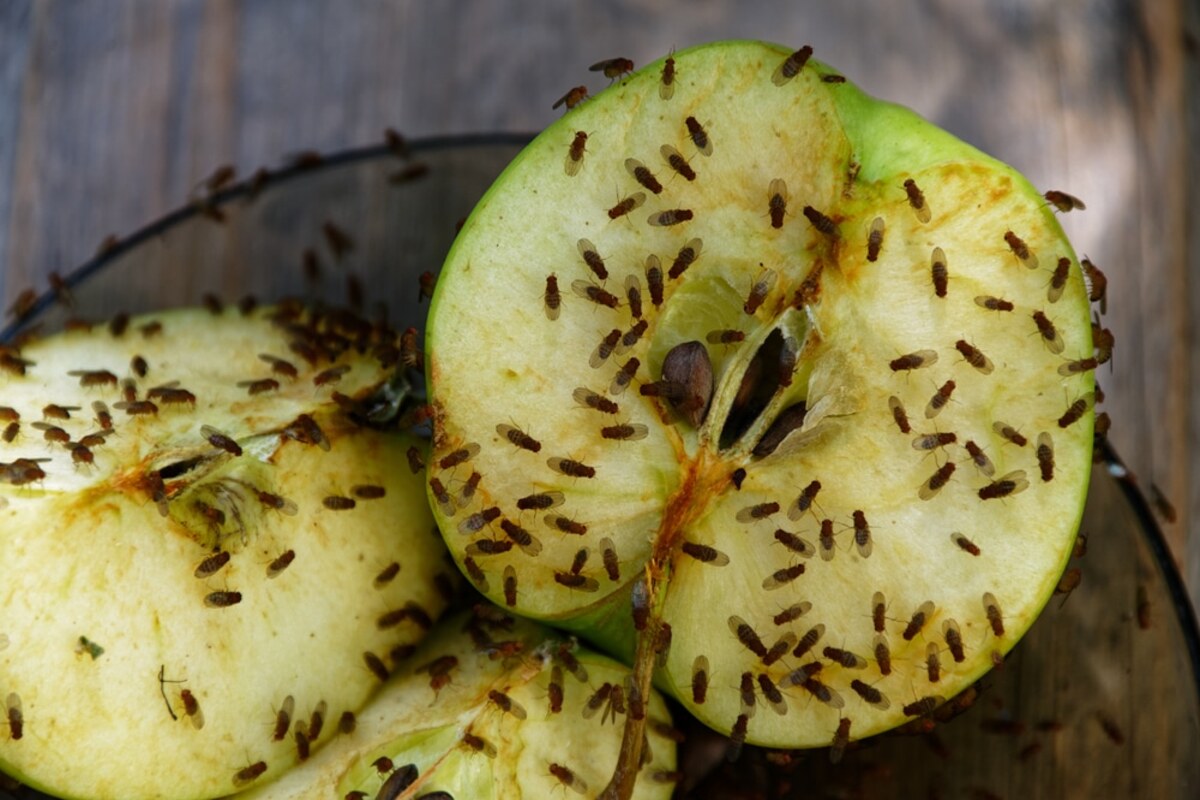Home>Gardening Tips and Tricks>Problem Solving>How To Get Rid Of Bugs In Garden Soil


Problem Solving
How To Get Rid Of Bugs In Garden Soil
Published: February 6, 2024
Learn effective problem-solving techniques to eliminate bugs from your garden soil and maintain a healthy, pest-free environment.
(Many of the links in this article redirect to a specific reviewed product. Your purchase of these products through affiliate links helps to generate commission for Chicagolandgardening.com, at no extra cost. Learn more)
Table of Contents
- Introduction
- Understanding the Types of Bugs in Garden Soil
- Assessing the Impact of Bugs on Garden Plants
- Natural Pest Control Methods
- Using Beneficial Insects to Combat Bug Infestations in Garden Soil
- Organic Bug Repellents for Garden Soil
- Implementing Cultural Practices to Prevent Bugs in Garden Soil
- Removing Bugs from Garden Soil: Step-by-Step Guide
- Conclusion
Introduction
Welcome to the world of gardening! Whether you’re a seasoned green thumb or just starting out, one thing you may encounter in your garden is bugs in the soil. These tiny creatures can wreak havoc on your plants, causing damage and hinder their growth. However, there’s no need to worry! In this article, we will explore effective ways to get rid of bugs in your garden soil.
Garden soil is a complex ecosystem that supports the growth of plants. While some bugs can be beneficial for the soil, others can be detrimental to your garden’s vitality. Bugs such as aphids, spider mites, and cutworms can damage plant roots, chew through leaves, and transmit diseases. Therefore, it’s crucial to take necessary steps to control these pests and create an environment where your plants can thrive.
Before diving into pest control methods, it’s important to understand the impact of bugs on garden plants. Identifying the types of bugs you’re dealing with is essential as it helps determine the appropriate course of action. Some bugs are beneficial for your garden, like earthworms, which improve soil structure and nutrient availability. Others, like grubs and slugs, can cause significant damage.
When it comes to dealing with bugs in garden soil, it’s important to prioritize organic and natural pest control methods. Chemical pesticides can harm not only the pests but also the beneficial organisms in the soil. By opting for natural alternatives, you can maintain a healthy and balanced ecosystem in your garden.
In this article, we will explore a variety of natural pest control methods, including the use of beneficial insects, organic bug repellents, and cultural practices to prevent bug infestations. Additionally, we will provide a step-by-step guide on how to remove bugs from your garden soil effectively. So let us dive in and discover the secrets to maintain a bug-free garden soil!
Understanding the Types of Bugs in Garden Soil
Before battling bugs in your garden soil, it’s important to understand the different types of insects you may encounter. While some insects are beneficial for your garden, others can be harmful and wreak havoc on your plants.
One common type of insect found in garden soil is the aphid. Aphids are tiny, soft-bodied insects that can multiply rapidly and suck the sap from plant leaves and stems. They can also transmit diseases from plant to plant. Another common culprit is the spider mite, a tiny arachnid that feeds on plant fluids, causing discoloration, webbing, and eventual leaf drop. Cutworms, on the other hand, are moth larvae that feed on young seedlings, cutting them off at the soil level.
In addition to these pests, there are a multitude of other insects that can infest your garden soil, such as thrips, caterpillars, and earwigs. Each of these pests has their own feeding habits and can cause various types of damage to your plants.
While it’s essential to identify and eliminate harmful bugs, it’s equally important to recognize that not all insects in your garden soil are nuisances. Some bugs are actually beneficial for your plants. For instance, earthworms are great indicators of healthy soil as they help break down organic matter and improve its structure. Ladybugs and lacewings are beneficial insects that prey on aphids and other pests, acting as natural pest control agents. Additionally, beneficial nematodes can help to control many soil-dwelling pests.
Understanding the types of bugs in your garden soil will help you determine the appropriate course of action. It’s crucial to implement pest control methods that target specific insects while sparing the beneficial ones. This will help maintain a balanced ecosystem in your garden and protect the overall health of your plants.
In the next sections, we will discuss effective methods to assess the impact of bugs on garden plants and explore natural pest control methods to combat bug infestations in garden soil. So let’s roll up our sleeves and get ready to tackle those pesky bugs!
Assessing the Impact of Bugs on Garden Plants
When bugs invade your garden, it’s crucial to assess the impact they have on your plants. Understanding the extent of the damage will help you determine the best course of action to eliminate the pests and protect your garden’s health.
One of the first signs of a bug infestation is visible damage to your plants. Look for chewed leaves, stunted growth, wilting, or abnormal discoloration. Many bugs feed on plant foliage, leaving behind jagged edges or holes on the leaves. Additionally, some pests may leave behind sticky residue or webs on your plants.
It’s also essential to monitor the growth and development of your plants. Bugs that attack the roots can disrupt the plant’s ability to absorb water and nutrients, leading to wilting and poor growth. Pay attention to any signs of weak stems, decreased flowering, or reduced fruit production.
Another indicator of bug impact is the presence of pests themselves. Conduct regular inspections of your plants, checking both the foliage and the soil around the roots. Look for adult insects, larvae, or eggs. Some pests, like cutworms, may hide under the soil during the day and emerge at night to feed.
Keep in mind that not all bugs in your garden soil are harmful. Some insects are natural predators that feed on pests, helping to control their population. It’s important to differentiate between beneficial and harmful insects to avoid unintentionally eliminating valuable allies in your quest to protect your plants.
As you assess the impact of bugs on your garden plants, take note of the types of bugs present. This information will be vital in determining the most effective pest control methods to employ. For instance, if you notice a significant population of aphids, you may want to consider introducing beneficial insects that prey on aphids, such as ladybugs or lacewings.
By closely monitoring the damage and presence of bugs in your garden, you can tailor your pest management approach accordingly. In the next sections, we will explore natural pest control methods, including the use of beneficial insects and organic bug repellents, to combat bug infestations in your garden soil. Let’s take action and protect our precious plants!
Natural Pest Control Methods
When it comes to dealing with bugs in your garden soil, opting for natural pest control methods is not only safer for the environment but also beneficial for the overall health of your plants. Let’s explore some effective strategies to combat bug infestations without relying on harmful chemicals.
1. Beneficial Insects: Introducing beneficial insects into your garden is a natural and effective way to control pests. Ladybugs, lacewings, and praying mantises are voracious predators that feed on aphids, mites, and other garden pests. You can attract these beneficial insects by planting flowers that provide nectar and pollen or by purchasing them from a reputable supplier.
2. Organic Bug Repellents: There are several organic and homemade bug repellents that can help deter pests from your garden soil. For instance, a mixture of garlic, onion, and pepper sprayed onto plants can repel insects. Neem oil, derived from the neem tree, is another effective natural insecticide that targets a wide range of pests.
3. Companion Planting: Planting certain companion plants alongside your vulnerable crops can help repel pests. For example, marigolds emit a scent that repels aphids, while mint plants can deter ants and cabbage moths. Research companion planting combinations that work best for your specific garden pests.
4. Barriers and Traps: Physical barriers can be used to protect your plants from crawling pests. Install row covers or netting to prevent insects from reaching your crops. Sticky traps can also be effective in capturing flying insects like aphids and whiteflies.
5. Cultural Practices: Implementing cultural practices can make your garden less hospitable to bugs. Regularly removing weeds and debris, as they can harbor pests and provide hiding spots. Proper watering and fertilizing techniques can also promote the overall health and resilience of your plants, making them less susceptible to bug infestations.
Remember, natural pest control methods require patience and vigilance. It may take time for beneficial insects to establish themselves, and organic repellents may need to be reapplied regularly. However, the long-term benefits of avoiding harmful chemicals far outweigh these minor inconveniences.
In the next section, we will focus on the use of beneficial insects to combat bug infestations in your garden soil. Let’s harness the power of nature and create a harmonious environment for our plants!
Using Beneficial Insects to Combat Bug Infestations in Garden Soil
One of the most natural and effective ways to control bug infestations in your garden soil is by utilizing beneficial insects. These small allies can act as your garden’s own pest control team, preying on harmful bugs and maintaining a balanced ecosystem. Let’s explore some of the common beneficial insects and how they can help combat bug infestations.
1. Ladybugs: Ladybugs, also known as lady beetles, are well-known predators of aphids, mealybugs, and scale insects. A single ladybug can consume hundreds of aphids in a day. These vibrant little insects are easy to attract to your garden by planting flowers like daisies, marigolds, and yarrow that provide a source of nectar and pollen for them to feed on.
2. Lacewings: Lacewings are delicate insects with lacy wings that are voracious predators of aphids, mites, and other soft-bodied pests. The larvae of lacewings, also known as aphid lions, are particularly effective at consuming large numbers of pests. Planting flowers like sunflowers, cosmos, and dill will help attract lacewings to your garden.
3. Praying Mantises: Praying mantises are fascinating insects that exhibit remarkable predatory behavior. These quiet predators feed on a variety of garden pests, including aphids, grasshoppers, and caterpillars. Praying mantises can be purchased as egg casings and placed in your garden to hatch and populate your garden with these beneficial insects.
4. Parasitic Wasps: Parasitic wasps are tiny insects that lay their eggs inside or on other insects. The larvae of these wasps then feed on the host insect, effectively controlling their population. Different species of parasitic wasps target specific pests, such as whiteflies, aphids, and caterpillars.
5. Ground Beetles: Ground beetles are nocturnal predators that feed on a wide range of pests, including slugs, snails, cutworms, and root maggots. These beetles are attracted to moisture, so providing them with moist hiding spots like logs or mulch can help encourage their presence in your garden.
When attracting beneficial insects to your garden, it’s important to create an environment that meets their needs. Plant a variety of flowering plants to provide nectar and pollen as food sources. Avoid using broad-spectrum insecticides that can harm both harmful and beneficial insects.
While beneficial insects can help control pest populations, it’s essential to remember that they are not a quick fix. It may take time for them to establish themselves in your garden, and their numbers may vary from season to season. Patience and persistence are key.
Incorporating beneficial insects into your pest management strategy can significantly reduce the need for chemical interventions and promote a healthier garden ecosystem. In the next section, we will explore organic bug repellents that can also aid in controlling bug infestations in your garden soil. Let’s keep our beneficial allies close and say goodbye to those troublesome pests!
Organic Bug Repellents for Garden Soil
When it comes to combating bug infestations in your garden soil, organic bug repellents offer a safe and effective alternative to chemical pesticides. These natural solutions not only help deter pests but also promote a healthier and more sustainable gardening approach. Let’s explore some organic bug repellents that you can use in your garden.
1. Neem Oil: Neem oil is derived from the neem tree and is an effective natural insecticide. It works by disrupting the life cycle of pests, repelling them, and inhibiting their ability to feed and reproduce. Dilute neem oil according to the instructions on the label and spray it on the affected plants to deter a wide range of pests, including aphids, whiteflies, and caterpillars.
2. Garlic and Onion: Bugs like aphids and mites are repelled by the strong odors of garlic and onion. Create a homemade insect repellent by blending garlic cloves or onions with water, straining the mixture, and spraying it onto your plants. Reapply regularly to ensure continued effectiveness.
3. Chili Pepper Spray: The natural compounds in chili peppers can deter a variety of pests. To create a chili pepper spray, blend fresh or dried chili peppers with water, strain the mixture, and add a few drops of liquid dish soap. Spray this mixture on your plants to repel insects like aphids, caterpillars, and beetles.
4. Soap Spray: A simple soap spray can help control soft-bodied insects like aphids and mites. Mix a mild liquid soap, such as Castile soap, with water and spray it on the affected plants. The soap disrupts the insect’s cell membranes, leading to their demise. Be sure to test the spray on a small section of the plant first to ensure it doesn’t cause any damage.
5. Diatomaceous Earth: Diatomaceous earth is a powder made from the fossilized remains of marine organisms. It works by physically dehydrating and damaging the exoskeletons of insects. Sprinkle a thin layer of diatomaceous earth around the base of plants or on the soil surface to create a barrier that pests like slugs and snails will avoid. Reapply after rainfall or irrigation.
Remember to apply these organic bug repellents carefully, following the instructions on the product labels or the recommended dilution ratios. It’s essential to target the pests directly and avoid spraying beneficial insects or pollinators. Always consider the specific needs and sensitivities of your plants when choosing and applying bug repellents.
Using organic bug repellents not only protects your plants from pest damage but also helps maintain a healthy and balanced ecosystem in your garden. In the next section, we will explore cultural practices that can help prevent bug infestations in your garden soil. Let’s delve into the proactive approach of keeping bugs at bay!
Implementing Cultural Practices to Prevent Bugs in Garden Soil
Prevention is key when it comes to keeping bugs at bay in your garden soil. By implementing cultural practices that promote a healthy and thriving garden ecosystem, you can prevent bug infestations and reduce the need for interventions. Let’s explore some essential cultural practices to help prevent bugs in your garden soil.
1. Weed Control: Weeds can act as hosts for pests, providing a hiding place and a source of food. Keeping your garden free from weeds eliminates potential harborage for bugs. Regularly remove weeds by hand or use a shallow hoe to gently dig them up.
2. Proper Watering: Watering practices play a crucial role in pest prevention. Overwatering can lead to excess moisture in the soil, creating favorable conditions for pests like slugs and snails. On the other hand, underwatering can stress plants, making them more vulnerable to pest attacks. Water your plants at their root zone, in the morning, and avoid wetting the foliage to minimize pest attraction.
3. Soil Health and Fertility: Healthy soil is the foundation for strong and resilient plants. Test your soil regularly to assess its nutrient levels. By maintaining optimal soil fertility, you create an environment where plants can thrive and are less susceptible to bug infestations. Incorporate organic matter, such as compost or well-rotted manure, into the soil to improve its structure and promote beneficial microbial activity.
4. Mulching: Mulching offers multiple benefits, including weed suppression, moisture retention, and temperature regulation. A layer of organic mulch, such as straw or wood chips, helps create an environment that is less favorable for pests. It acts as a physical barrier, making it difficult for bugs to reach the soil surface, and can also deter certain pests with its scent.
5. Rotation and Diversity: Practicing crop rotation and diversifying your garden can help disrupt the life cycles of pests. By avoiding planting the same crops in the same spot year after year, you reduce the likelihood of pests building up in the soil. Interplanting different crops and utilizing companion planting techniques can also confuse and deter pests.
6. Sanitation: Maintaining a clean garden environment is essential for preventing pest infestations. Remove fallen leaves and debris regularly as they can provide hiding places for bugs. Prune damaged or diseased plant parts to prevent pests from establishing themselves.
By implementing these cultural practices, you create an environment that is less hospitable to pests and more conducive to the health and vitality of your garden. Prevention is always more effective and sustainable than trying to control an existing infestation.
In the next section, we will provide a step-by-step guide on how to remove bugs from your garden soil effectively. Let’s put these prevention strategies into action and ensure a pest-free garden soil!
Removing Bugs from Garden Soil: Step-by-Step Guide
Dealing with bugs in your garden soil can be a challenging task, but with the right approach, you can effectively eliminate these pests and restore the health of your plants. Here is a step-by-step guide to help you remove bugs from your garden soil.
1. Identify the pests: Before taking any action, it’s important to accurately identify the pests you’re dealing with. Different pests require different methods of control, so take the time to observe and research the specific bugs in your garden soil.
2. Remove affected plants: If you have plants that are heavily infested, it may be best to remove them from your garden. This will help prevent the bugs from spreading to other plants. Bag or seal the affected plant material and dispose of it properly.
3. Improve soil drainage: Many pests thrive in damp soil conditions. To discourage them, ensure that your garden soil has proper drainage. Incorporate organic matter like compost into the soil to improve its structure and drainage capabilities.
4. Cultivate the soil: Loosen the top few inches of soil in your garden beds using a garden fork or cultivator. This disrupts the habitat of pests, exposing them to predators and making it more difficult for them to survive.
5. Implement natural pest control methods: Utilize the natural pest control methods we discussed earlier, such as introducing beneficial insects or utilizing organic bug repellents. These methods can help keep pest populations in check and prevent future infestations.
6. Practice crop rotation: If you have recurring pest problems, consider implementing crop rotation. By rotating your crops each growing season, you disrupt the life cycles of pests, reducing their abundance in the soil.
7. Maintain good garden hygiene: Regularly remove weeds, fallen leaves, and other debris from your garden. This reduces hiding places for pests and eliminates potential food sources.
8. Monitor your plants: Keep a close eye on your garden, regularly inspecting your plants for any signs of pest infestations. Early detection allows for swift action and prevents pests from causing significant damage.
9. Keep records: Maintain records of the pest problems you encounter and the methods you use to control them. This will help you track the effectiveness of your pest control efforts and make informed decisions in the future.
10. Encourage beneficial insects: Lastly, create a welcoming habitat for beneficial insects. Plant flowers that attract these beneficial allies, provide water sources, and avoid using pesticides that can harm them.
By following these steps, you can effectively remove bugs from your garden soil and establish a healthier and more pest-resistant garden ecosystem. Remember to stay persistent, as pest control may require ongoing efforts to achieve long-term success.
Now that you have the knowledge and tools to tackle bug infestations in your garden soil, it’s time to put your newfound skills into action. Happy gardening and enjoy your bug-free plants!
Conclusion
Gardening is a rewarding and fulfilling endeavor, but dealing with bugs in your garden soil can be a common challenge. By understanding the types of bugs, assessing their impact on your plants, and implementing natural pest control methods, you can effectively combat bug infestations and maintain a healthy garden.
Through the use of beneficial insects, such as ladybugs and lacewings, you can harness the power of nature to control pests. These allies will help keep bug populations in check and minimize the need for chemical interventions. Organic bug repellents, like neem oil and garlic sprays, offer effective and safe alternatives, and cultural practices, such as weed control and proper watering, prevent bug infestations from occurring in the first place.
To remove bugs from garden soil, it’s important to correctly identify pests, improve soil drainage, and implement natural pest control methods. Cultivating the soil, practicing crop rotation, and maintaining good garden hygiene are essential steps. Regular monitoring and record-keeping will help you stay on top of any pest issues that arise, and attracting beneficial insects will establish a natural balance in your garden ecosystem.
Remember, prevention is key, and maintaining a healthy and resilient garden soil is your best defense against bug infestations. By implementing these strategies and staying proactive in your garden care, you can enjoy a thriving garden full of healthy plants.
So, roll up your sleeves and put your knowledge into action. Embrace the beauty of nature and create a bug-free environment that will allow your garden to flourish. Happy gardening!






